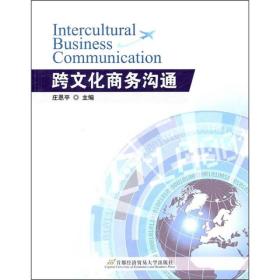
跨文化商务沟通
套装勿拍 无赠品 都是单本
¥ 4.99 1.6折 ¥ 32 八五品
库存37件
山东滨州
认证卖家担保交易快速发货售后保障
作者庄恩平 编
出版社首都经济贸易大学出版社
出版时间2011-01
版次1
装帧平装
货号9787563818723
上书时间2024-11-11
- 在售商品 暂无
- 平均发货时间 9小时
- 好评率 暂无
- 最新上架
商品详情
- 品相描述:八五品
图书标准信息
- 作者 庄恩平 编
- 出版社 首都经济贸易大学出版社
- 出版时间 2011-01
- 版次 1
- ISBN 9787563818723
- 定价 32.00元
- 装帧 平装
- 开本 16开
- 纸张 胶版纸
- 页数 331页
- 字数 412千字
- 正文语种 简体中文,英语
- 【内容简介】
-
经济全球化增进了不同文化背景人们的交流和合作,也促进了企业向国际市场和新兴领域的拓展。然而,不同文化背景的企业经营者之间的文化冲突现象日益显著,合作双方在经营与管理时所产生的矛盾也日益增加,甚至导致了合作失败。研究表明,导致跨文化管理失败的主要原因在于文化差异。著名跨国文化差异研究专家戴维·A.利克斯对此作了如下结论:大凡跨国公司大的失败,几乎都是忽略文化差异所导致的结果。于是,管理学者试图从管理角度分析跨文化管理失败的原因;跨文化沟通学者也试图以跨文化视角探索产生文化冲突的根源。两种研究方法看似都有其道理,但实际上都难以解决企业所面临的实际问题。于是美国教授IrisVarner于2000年提出了InterculturalBusinessCommunication(跨文化商务沟通)的理论框架,她将商务、文化与沟通三者融为一体,旨在分析与解决在跨文化工作环境中的跨文化问题。
根据《高等学校英语专业教学大纲》以及“商务英语”专业的要求,外语人才培养应适应社会发展的需要,培养学生的跨文化沟通能力。而且,具有跨文化沟通能力的人才已成为21世纪社会所急需的人才。
《跨文化商务沟通》一书就是根据以上需求,以IrisVarner教授跨文化商务沟通学科的理论框架,结合教学特点,以及作者多年来对跨文化商务沟通学科的研究、跨国公司咨询与培训的经验,精心设计编写而成的。因此,《跨文化商务沟通》具有以下特点:
特点之一:这是一本以案例为主的教材,案例涉及跨文化商务语境中的方方面面,许多案例都是作者参与跨国公司咨询与培训所涉及的实际案例,因此这些案例都体现跨国公司管理中的实际问题,分析与解决案例中的文化冲突问题对学生的未来工作具有指导意义。
特点之二:注重跨文化能力培养,培养学生在跨文化商务语境中发现问题、分析问题与解决问题的能力。
特点之三:注重跨文化商务语境中的商务沟通知识与技能,如:如何反馈、如何提问、如何表示理解与否、如何写电话留言等,这些都是跨文化工作环境中最基本而又最重要的工作知识与技能。
特点之四:注重学生的参与讨论过程,培养学生以跨文化视角思考问题与分析问题的能力,所有问题都是开放性的问题,因而能激发学生讨论的积极性。
本教材可供英语专业、商务英语专业(方向)学生使用,也可作为大学英语选修课及“跨文化交际”课程的教材。 - 【目录】
-
PartOneInterculturalAwareness/1
Unit1LanguageandCulture/3
LearningObjectives/4
Warm-upDiscussion/4
CoreReading1
TheRoleofLanguageinInterculturalBusinessCommunication/4
InterculturalNotes/8
VocabularyinContext/9
InterculturalQuestions/10
ExpandingVocabulary/11
SpeakingInterculturally/12
CoreReading2
LanguageMirrorsValues/13
InterculturalNotes/15
VocabularyinContext/16
QuestionsforDiscussion/17
CheckingInterculturalKnowledge/17
DevelopingInterculturalSkills/18
Unit2BarrierstoInterculturalCommunication/20
LearningObjectives/21
Warm-upDiscussion/21
CoreReading1
BarrierstoInterculturalCommunication/21
InterculturalNotes/25
VocabularyinContext/26
InterculturalQuestions/28
ExpandingVocabulary/28
IncreasingInterculturalAwareness/30
CoreReading2
TheRoleofInterculturalCommunicationBarriers,AffectiveResponses,ConseusualStereotypes,andPerceivedThreat/31
InterculturalNotes/34
VocabularyinContext/34
QuestionsforDiscussion/35
CheckingInterculturalKnowledge/36
DevelopingInterculturalSkills/37
Unit3NonverbalCommunication/39
LearningObjectives/39
Warm-upDiscussion/40
CoreReading1
SignificanceofNonverbalCommunication/40
InterculturalNotes/43
VocabularyinContext/44
InterculturalQuestions/45
ExpandingVocabulary/45
UnderstandingtheMostPopularGestures/46
CoreReading2
CharacteristicsofNonverbalCodes/51
InterculturalNotes/54
VocabularyinContext/55
QuestionsforDiscussion/55
CheckingInterculturalKnowledge/55
DevelopingInterculturalSkills/56
PartTwoCommunicationSkills/59
Unit4DifferentCommunicationStyles/61
LearningObjectives/62
Warm-upDiscussion/62
CoreReading1
VerbalCommunication:TheWayPeopleSpeak/62
InterculturalNotes/67
VocabularyinContext/68
InterculturalQuestions/69
ExpandingVocabulary/69
DevelopingPresentationSkills/70
CoreReading2
CommunicationStyles/73
InterculturalNotes/76
VocabularyinContext/77
QuestionsforDiscussion/77
CheckingInterculturalKnowledge/78
DevelopingInterculturalSkills/79
Unit5PresentationSkillsintheWorkplace/80
LearningObjectives/81
Warm-upDiscussion/81
CoreReading1
InterculturalCompetenceinBusinessPresentations/81
InterculturalNotes/85
VocabularyinContext/87
InterculturalQuestions/88
ExpandingVocabulary/89
DevelopingJobInterviewSkills/90
CoreReading2
InterculturalFactors:WhenMakingInternational
Presentations/91
InterculturalNotes/94
VocabularyinContext/95
QuestionsforDiscussion/95
CheckingInterculturalKnowledge/96
DevelopingInterculturalSkills/97
Unit6TimeandCulture/99
LearningObjectives/100
Warm-upDiscussion/100
CoreReading1
TimeandCulture/100
InterculturalNotes/103
VocabularyinContext/104
InterculturalQuestions/104
ExpandingVocabulary/105
UnderstandingtheConceptofTime/107
CoreReading2
TimeOrientation/108
InterculturalNotes/110
VocabularyinContext/110
QuestionsforDiscussion/110
CheckingInterculturalKnowledge/111
DevelopingInterculturalSkills/112
PartThreeCulturalDifferences/113
Unit7UnderstandingJapaneseCulture/115
LearningObjectives/116
Warm-upDiscussion/116
CoreReading1
TheCulturalMold:DifferencesthatMakeaDifference/116
InterculturalNotes/119
VocabularyinContext/121
InterculturalQuestions/122
ExpandingVocabulary/124
UnderstandingJapaneseCommunicationStyles/125
CoreReading2
HowJapaneseandAmericansViewEachOthers
CommunicationHabits/126
InterculturalNotes/129
VocabularyinContext/130
QuestionsforDiscussion/131
CheckingInterculturalKnowledge/132
DevelopingInterculturalSkills/132
Unit8HowAmericanandGermanSeeEachOther/134
LearningObjectives/135
……
PartFourInterculturalandBusiness
PartFiveInterculturalCompetence
SuggestedAnswers
点击展开
点击收起
相关推荐
— 没有更多了 —




















以下为对购买帮助不大的评价